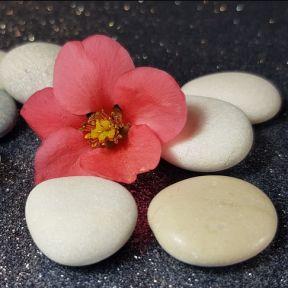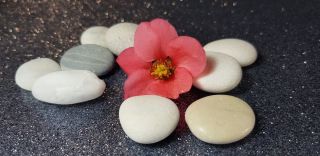MINDFULNESS- Healing the Psychological Bumps and Bruises of Adulthood. A mindfulness approach ensures that pain is seen as a signal for compassion. Reviewed by Michelle Quirk

KEY POINTS-
- Growth and pain weave their way through our lifespans.
- Pain is a movement and, therefore, transient and informative.
- Through compassionate wisdom, we learn that beneath the hardened shell of the ego, there is a true self.
When pain is accepted for what it is, a lesson and a warning, and deeply looked into and heeded, the separation between pain and pleasure breaks down, both become just experience—painful when resisted, joyful when accepted. —Sri Nisargadatta Maharaj

Early in my career as a psychotherapist, when someone would enter counseling with the goal of wanting personal growth, I would jump right in with the latest technique in my professional toolbelt. Aided by a plethora of self-help books, clients would embark on deep explorations of their histories, of dreams left unfulfilled, aspirations extinguished, and hopes still flickering in the distance. Invariability, the catalyst for this quest was some form of pain—often presented as a psychological symptom of depression, anxiety, or a combination of both.
For most who began this trek, it was clear that the goal was not the transformation of the self, but the ending of the pain—a decrease in suffering so that life would, once again, be enjoyable. If along the way they gained some insights into their true nature, that was the icing on the cake. However, gaining these insights, minus the alleviation of pain, or, worse, the increase in psychological discomfort, was a quick ticket to a new therapist and a rush back to the bookstore to find whatever new best seller was promising a life free of discomfort.
After years of unsuccessfully trying to remove the pain from my clients’ growth process and scaring them away with the mantra, “Pain is inevitable; suffering is optional,” I chose a more mindful approach that both honors their pain and seeks its transformation.
Growth and pain weave their way through our lifespans. From the lesson of caution taught by the hot stove to the broken heart that teaches the rollercoaster of romantic love, our daily experiences consistently remind us that pain serves a purpose. We are both blessed and cursed to measure our development through the slings and arrows of random misfortunes and self-inflicted wounds.
As the growing pains of childhood give way to the bumps and bruises of adulthood, we often leave behind the most important lesson learned in those earlier years—pain, is itself, a movement and, therefore, is transient and informative. It is the primary lesson in the school of hard knocks that life hurts, and what doesn’t kill us makes us stronger. Yet, as we grow older, we lose sight of this fact. Weary from experience, we miss the warning signs that arise when the love of oneself—expressed in our attempts to be free of suffering—runs into an obstacle.
The teacher Nisargadatta Maharaj pointed out that pain is a call for attention and “the penalty for carelessness.” Its remedy, he said, is “intelligent and compassionate action.” While this might sound like more doing—a class in Suffering 101, a “feel-the-burn” yoga, or some other form of self-punishment cloaked as self-enrichment—the truth is that action is already happening. What we miss when we strain to see a future, minus pain, is that the movement of love has run into a roadblock and a life lesson is at hand. Rather than frantically searching for immediate relief, sitting in mindful awareness of the pain is often the best course. Likewise, a compassionate act of not doing anything foolish to ease the discomfort may be the right prescription.
The poet Kahlil Gibran wrote that pain “is the bitter potion by which the physician within you heals your sick self.” Mindfulness teaches us that resisting this potion or attempting to replace it with something more palatable often impedes the recovery process and risks turning the potion into a poison.
Through compassionate wisdom, we learn that beneath the hardened shell of the ego, there is a true self that seeks growth through the deepening of conscious awareness. Growing pains are, as Gibran writes, “the breaking of the shell that encloses your understanding.” Once both the mechanism and purpose of pain are exposed to the light of loving awareness, through Gibran’s antidote of “silence and tranquility,” we discover that the self we had been trying to poke and prod to grow was the false self and that our true nature is revealed when we remove the obstacles to the natural movement of love.
Paradoxically, guiding someone through this “silence” can be a very noisy endeavor. Resistance to emotional pain rivals any of the mind tricks used to block out physical pain, and psychotherapy clients often go kicking and screaming into the unexplored lands of their psyches. While Carl Jung advised that “there is no birth of consciousness without pain,” it remains a hard sell to many worn-out souls who seek psychotherapy as bathing in calming waters only to find a raging river. Convincing clients to head straight into these waters—albeit with the floatation device that is the supportive counseling relationship—requires the Zen assurance that “the obstacle is the path.”
In my current work with clients, I advise them that acceptance of the present moment, to include moments of psychological pain, does not mean becoming life’s punching bag, passively taking whatever life dishes out. Instead, it encourages what the Buddha referred to as “right action”—acting in accordance with wisdom and compassion. I assure them that the energy freed up when they let go of resistance and face pain with courage and endurance allows them to flow with the movement of life and, when appropriate to the situation, act. Borrowing from the world of chronic pain management, my new mantra for clients facing psychological suffering, “Know pain, know gain,” does not scare clients away and opens more doors to healing.
- Questions and Answers
- Opinion
- Motivational and Inspiring Story
- Technology
- Live and Let live
- Focus
- Geopolitics
- Military-Arms/Equipment
- Security
- Economy
- Beasts of Nations
- Machine Tools-The “Mother Industry”
- Art
- Causes
- Crafts
- Dance
- Drinks
- Film/Movie
- Fitness
- Food
- Games
- Gardening
- Health
- Home
- Literature
- Music
- Networking
- Other
- Party
- Religion
- Shopping
- Sports
- Theater
- Health and Wellness
- News
- Culture

